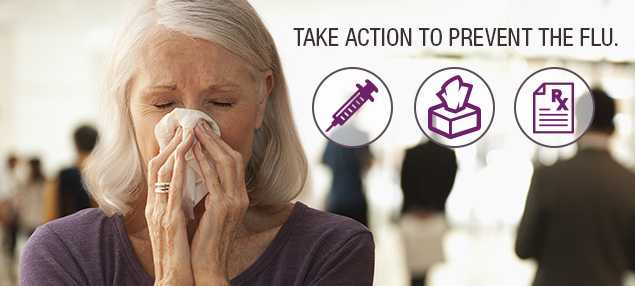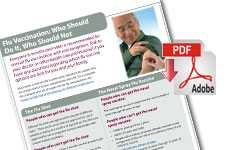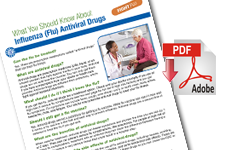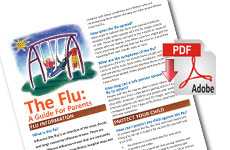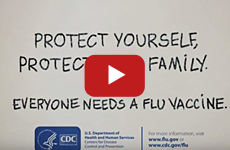Preventive Steps
Take time to get a flu vaccine.
- CDC recommends a yearly flu vaccine as the first and most important step in protecting against flu viruses.
- While there are many different flu viruses, a flu vaccine protects against the viruses that research suggests will be most common. (See Vaccine Virus Selection for this season’s vaccine composition.)
- Flu vaccination can reduce flu illnesses, doctors’ visits, and missed work and school due to flu, as well as prevent flu-related hospitalizations.
- Everyone 6 months of age and older should get a flu vaccine every year before flu activity begins in their community. CDC recommends getting vaccinated by the end of October, if possible. Learn more about vaccine timing.
- CDC recommends use of injectable influenza vaccines (including inactivated influenza vaccines and recombinant influenza vaccines) during 2017-2018. The nasal spray flu vaccine (live attenuated influenza vaccine or LAIV) should not be used during 2017-2018.
- Vaccination of high risk persons is especially important to decrease their risk of severe flu illness.
- People at high risk of serious flu complications include young children, pregnant women, people with chronic health conditions like asthma, diabetes or heart and lung disease and people 65 years and older.
- Vaccination also is important for health care workers, and other people who live with or care for high risk people to keep from spreading flu to them.
- Children younger than 6 months are at high risk of serious flu illness, but are too young to be vaccinated. People who care for infants should be vaccinated instead.

Cover your nose and mouth with a tissue when you cough or sneeze.
Take everyday preventive actions to stop the spread of germs.
- Try to avoid close contact with sick people.
- While sick, limit contact with others as much as possible to keep from infecting them.
- If you are sick with flu-like illness, CDC recommends that you stay home for at least 24 hours after your fever is gone except to get medical care or for other necessities. (Your fever should be gone for 24 hours without the use of a fever-reducing medicine.)
- Cover your nose and mouth with a tissue when you cough or sneeze. Throw the tissue in the trash after you use it.
- Wash your hands often with soap and water. If soap and water are not available, use an alcohol-based hand rub.
- Avoid touching your eyes, nose and mouth. Germs spread this way.
- Clean and disinfect surfaces and objects that may be contaminated with germs like the flu.
Take flu antiviral drugs if your doctor prescribes them.
- If you get the flu, antiviral drugs can be used to treat your illness.
- Antiviral drugs are different from antibiotics. They are prescription medicines (pills, liquid or an inhaled powder) and are not available over-the-counter.
- Antiviral drugs can make illness milder and shorten the time you are sick. They may also prevent serious flu complications. For people with high-risk factors, treatment with an antiviral drug can mean the difference between having a milder illness versus a very serious illness that could result in a hospital stay.
- Studies show that flu antiviral drugs work best for treatment when they are started within 2 days of getting sick, but starting them later can still be helpful, especially if the sick person has a high-risk health condition or is very sick from the flu. Follow your doctor’s instructions for taking this drug.
- Flu-like symptoms include fever, cough, sore throat, runny or stuffy nose, body aches, headache, chills and fatigue. Some people also may have vomiting and diarrhea. People may be infected with the flu, and have respiratory symptoms without a fever.
Digital Resources
- Page last reviewed: September 12, 2017
- Page last updated: September 12, 2017
- Content source:
- Centers for Disease Control and Prevention, National Center for Immunization and Respiratory Diseases (NCIRD)
- Page maintained by: Office of the Associate Director for Communication, Digital Media Branch, Division of Public Affairs


 ShareCompartir
ShareCompartir
